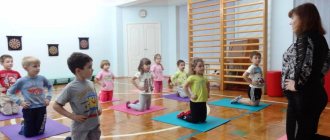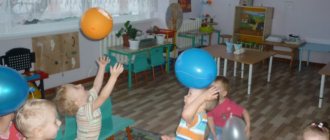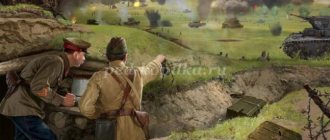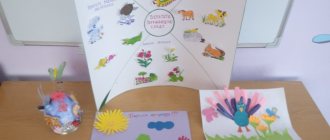Other ideas
Easter is a touching spring holiday. Spring is coming, the first flowers appear, the days become sunny and warm. A holy celebration is an excellent occasion to please your loved ones with an unusual souvenir made at home from improvised materials. Here are some more ideas for creativity with children of different ages:
- Toys made of wool using the felting method.
- Round frame with eggs and willow.
- Embroidery.
- Souvenirs using quilling technique.
- Testicles decorated with foam.
- Towels with inscriptions.
- Paper angels.
- A nest made of twigs.
- Egg herbal.
- Original coloring of eggs for Easter.
- Testicle sacs.
- Funny little animals.
- Clothes for testicles.
- Eggshell applique.
- Volumetric postcards.
- Application from napkins.
- Unusual bouquet of willow branches.
- Chickens made from pompoms.
- Testicles in beads.
- Kinder chickens.
DIY Easter crafts create a special atmosphere at home and lift the spirits of adults and children. And while working on their manufacture, you can tell your child about the history of the holiday and its traditions.
Progress of the lesson:
Children enter the group room and sit in a semicircle. The teacher brings in a chicken (toy)
.
- Children, who came to visit us? (Hen)
.
- Look, something happened to the chicken, she’s so sad.
- What happened, chicken?
Chicken: Hello, kids, listen to what happened to me. I went for a walk with my chickens. Although I punished them: “Ko-ko-ko, don’t go far!”
, but they didn’t listen to me, they ran away and hid in the grass.
I called and called: “Where, where, where have you gone, where have you gone?
” But they didn’t show up and didn’t come up to me.
- Guys, let's help the hen find the chickens (Let's)
.
— Tell me, what color are the chicken’s babies (yellow)
.
- And if you touch them, stroke them, then how soft, fluffy they are?
.
- Well done!
- To help the chicken, let's draw chickens. (Yes)
- Sit on the chairs at the tables and look at what is on your table. (paint, napkins and sheets)
- What is missing for drawing? (tassel)
- That's right, today we will paint with our fingers.
- Look, you have an outline of a chicken drawn on your sheets of paper, you must color it with your fingers. Look how I do it. (I put yellow paint on my finger and put a chicken feather, like this)
— Before we start work, we will stretch our fingers in an outdoor game:
— The chicken went out for a walk, to nibble some fresh grass (We clap our hands on our knees or the table)
— And behind her are the boys, yellow chickens (We walk with our fingers on the table)
- Ko-ko-ko-ko-ko-ko, don’t go far (We wag our fingers)
— Eating a fat beetle, an earthworm (We show the fat beetle with our hands)
— We drank a trough full of water. (We show how we scoop water and drink)
- Well done! We've stretched our fingers, and now let's remember how I showed you to draw with your fingers, but first without paint. (like this)
- Guys, look, you have paint on your table, what color is it? (Yellow)
.
We take paint on our finger and paint the chicken's feathers
Please note that we do not step beyond the contour. There are wet wipes next to you; if necessary, wipe your finger on it
- The chicken is ready.
- Oh, how can he come running to his mother hen, he doesn’t have legs or eyes. And there is no beak yet.
- Let's finish drawing them with a brown felt-tip pen. (Let's)
- Look guys, our chickens are ready. Bring them to the mother hen.
- Say, chicken, these are your babies, we found them.
Chicken: “Yes! Thank you guys, they are so beautiful. ”
- Guys, tell me, what kind of chickens did we draw?
What kind of chickens turned out (Beautiful, fluffy, yellow, joyful)
“You all worked really hard today.” And for this the chicken has prepared a sweet surprise for you.
The chicken gives out sweets to the children.
The lesson is over.
Progress of the lesson:
Greetings
Hello guys, it's great that you all came today! Our smart heads will think a lot, cleverly. The ears will listen, the mouth will speak clearly. Hands will clap, Feet will stomp. Our backs straighten, we smile at each other.
Surprise moment “What’s in the egg?”
- Children, look what's in the nest? Eggs. Take yourself one egg. Try opening it. What's in an egg? (Figures of hens and cockerels). Who hatched from your egg?
Construction game “Build a roost”
— Place two cubes at a short distance from each other. Place a block on top of the cubes. There you go! You can plant a cockerel or a chicken.
Breathing exercise “Fly, feather”
- And here is a chicken feather. It's light. Tickle your cheek, nose, palm with a feather. Now put the feather on your palm and blow lightly. Pick up the feather and place it on your palm again. Now blow on the feather strongly.
Didactic exercise “Hide the chicken under the egg”
— Place the chicken in front of you. Now cover it with an egg on top, so that the chicken is not visible. The chicken is on the bottom and the egg is on top.
Drawing "Chicken feed"
Children draw grains and worms on trays with semolina.
Our white hen has many chicks. There are sons and daughters here, and everyone wants to eat.
— The chicken has a lot of chicks, so draw a lot of grains and worms.
Dynamic pause “In the poultry yard”
To the song “In the Poultry Yard,” children walk on massage grass mats, on a bench-bridge, jump over bumps, jump over a stream, and climb through a hoop.
Table theater “The Tale of the Ryaba Hen”
As the plot of the fairy tale develops, all the acting characters of the fairy tale - figurines from the tabletop puppet theater - are sequentially put on the table.
- Children, look who came to visit them (grandfather, woman, Ryaba hen, mouse). Choose and show the one you liked the most. Name it.
Children place plastic eggs into the recesses of the egg cage.
— How many eggs? Lots of eggs.
Application “Chicks hatched from eggs”
— The chickens hatched from the eggs and ran away. Let's collect them and return them to the nest. Take the chickens, coat them with glue on the back side and attach them to the image of the nest. Smooth the top with a pen.
Outdoor game "Chicks and the cat"
- I will be a chicken, and you will be my chickens. Let's go for a walk and peck some grains. Just be careful, there is a cat sleeping nearby. If he wakes up, immediately run under the mother hen’s wing.
A crested hen came out, with yellow chicks with her. The chicken clucks: “Ko-ko! Don't go far. On a bench by the path a cat lies down and dozes.” The cat opens its eyes and catches up with the chickens.
Didactic game "Guess"
- There are toys in front of you. Guess the riddle and show the toy the answer.
He walks importantly, pecking, crowing. Who is this? Rooster. They are small, they run, they squeak
Who is this? Chickens. She clucks, lays eggs and hatches chicks. Who is this? Hen.
Didactic game “Colored grains”
- Here are the grains - yellow and red (details of a large mosaic). They need to be collected and placed on plates. Yellow grains - on a yellow plate, red grains - on a red plate.
Children paint feathers on the chicken with yellow paint.
Exercise with clothespins “Decorate the tail of a rooster”
- Children, take the silhouettes of cockerels and attach multi-colored clothespins to them so that the cockerel gets a bright tail. The cockerel is happy, how did the tails turn out? Bright, beautiful, colorful!
Finger gymnastics “The cockerel woke up”
Our cockerel suddenly woke up, (Palm up, index finger resting on the thumb, the rest are placed upward)
Turned straight to the sun. (Rotate your hand in different directions)
Crowed once, twice, three times! (Spread and close the index finger and thumb)
Don't oversleep today. (Wag your finger)
How to make an Easter chick from fondant
In order to make a figurine of a chicken hatched from an egg, you will need:
- Mastic. You need a lot of yellow, white, orange, as well as a little pink, purple and black mastic for the eyes and bow.
- A rolling pin and a thin sharp knife for working with the mass.
- Stack with large round tip.
- A toothpick for drawing out texture and working with fine details of the figure.
Sculpting process
The mastic chicken is molded in several stages:
- Cut the workpieces. To make jewelry you need to do:
- a large ball of white mastic - an eggshell will be molded from it, in which the chicken sits;
- two balls of yellow mastic for the body and head of the chicken - they should be smaller in size than the ball for the shell;
- two identical, small ovals for the wings;
- a thin small flagellum from which the chick's crest will be made;
- a small triangle with smoothed edges for a beak made of orange mastic;
- three small balls, two purple and one smaller, pink, for a bow.
- Make a shell.
- Press the middle of the white ball so that you get half an egg. This is conveniently done using a stack with a large round tip.
- Cut the edges of the egg with a knife to create sharp peaks that imitate a broken shell.
- Fashion a chicken.
- Place one yellow ball in the finished shell - it will be the body.
- Attach another yellow ball on top of it - it will be the bird’s head. First, insert a toothpick into the body, and then place the head on it.
- Using a toothpick, press two holes for the eyes on the head and fill them with black mastic.
- Make three dots on the chicken's cheeks.
- Then attach the orange beak blank and use a toothpick to press two small holes - the nostrils.
- Flatten two oval blanks a little, apply three longitudinal stripes to them with a toothpick. Slightly bending them along the axis, attach them to the body of the chicken, resting them on the shell.
- Sculpt the details.
- Cut a thin flagellum into two or three small parts and, connecting them at the base, carefully stick to the head. Thus, the chicken should have a small tuft.
- We make a bow from three small balls of mastic. The middle is a pink ball, along the edges of the bow there are purple blanks. Using a toothpick, draw folds on the bow for greater realism.
The finished chicken figurine is suitable not only for decorating Easter cakes. It can be used to decorate cakes, cupcakes and other baked goods.
Alternative sculpting option on video:
Choosing a way to learn cooking
Today there are several methods and ways to learn cooking. Each of them involves the steps described above: preparation and practice. You should choose the one that is closer to your liking and more understandable.
Opening a book about tasty and healthy food
Teaching from books and pamphlets is one of the old, time-tested methods. All previous generations used it. Previously, recipes were passed down from elders to younger ones through the keeping of home cookbooks. Today the method is practiced less frequently.
Studying recipes on the Internet
Finding recipes online is easier because you can immediately set the parameters of your preferred dish. It is permissible to indicate the ingredients and the desired result in quantity. The search engine is extensive.
Other teaching methods
Other forms include:
- attending culinary courses and master classes;
- personal training from experienced specialists.
To choose the optimal path, you should ask yourself which form is closer in spirit and how much professional skills you want to master.
Diet with rice and buckwheat
Rice is remarkable for its content of carbohydrates and useful minerals, vitamin B complex. At the same time, rice should be limited and not given to the chickens too much; if there is an excess, paralysis of the birds is possible.
From the first week of life, chickens can be fed with cereals; rice cereals are given in small doses; this will be enough for the babies to feel full, cheerful and strong. It is better to give rice during the day.
Whether or not to give the chicks buckwheat is up to the owners of the bird to decide. Opinions differ on this matter. According to some conclusions, buckwheat should not be included in the menu of a young chicken brood, since it can cause intoxication in fragile birds and, when swelling, will lead to digestive disorders.
Others believe and prove from their own experience that feeding buckwheat to chicks is beneficial; vegetable protein from cereals is especially valuable. The main thing is not to overdo it. Chickens can eat ground and boiled buckwheat in small portions, which are mixed with the main feed.



